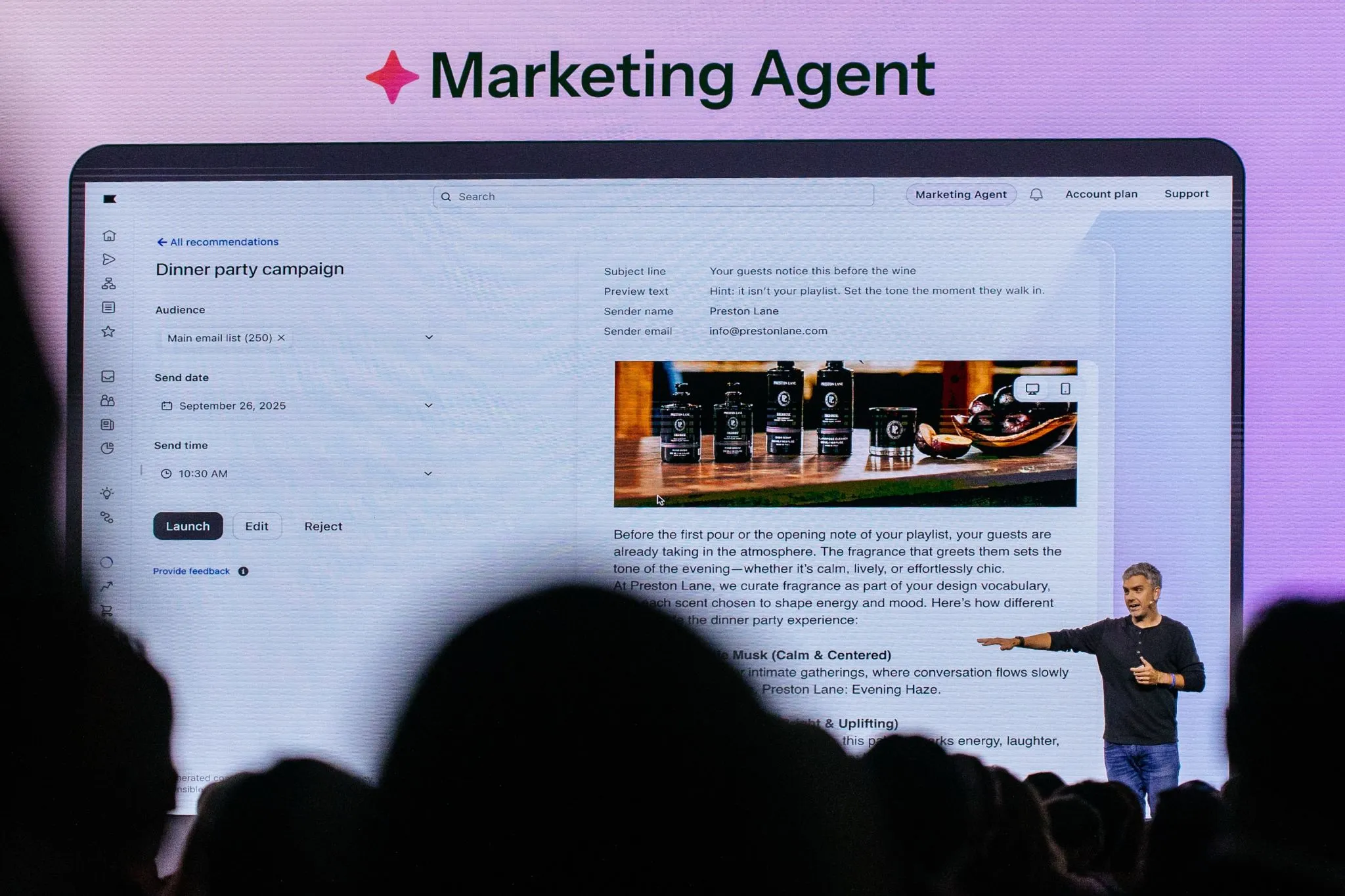BLOG
How Top eCommerce Brands Build Word-of-Mouth to Grow Sales
Raúl Galera from ReferralCandy shares how two entrepreneurs generated over a million in sales within a few years through word-of-mouth marketing at the Shopify Meetup Hong Kong 2019 Spring event.


Asia is leading the way in ecommerce growth with projected revenue of US$970 billion in 2019, according to Statistica. Entrepreneurs have been able to tap into this growth and build new brands with global eCommerce platforms that help build sophisticated online stores in a matter of days, without a single line of code. But after that, how will you reach new customers without using a large advertising budget? Effective word-of-mouth marketing with the right message to the right communities is one of the ways that new businesses earn millions in a matter of years.
In this post, you will find out how two leading entrepreneurs in the Asia Pacific region have built their global communities of happy customers who are eager to share their purchases with their friends and family.
How Riff Raff & Co Connected to Parents as Brand Advocates

Founded in 2016, Riff Raff & Co has already grown into a million-dollar company with over 50,000 happy parents and babies who use their comforter-style sleeping dolls. In 2015, Emma Kruger, the company’s founder, was inspired to create a new comforter toy on her trip to Bali. As a mom travelling with her two children, it was a challenge to have three toys for each of them. So instead, she designed her own doll that had everything a baby, toddler, and parent would want: snuggly, entertaining, and great for lulling a baby to sleep.
Creating an Unbeatable Product She Wished She Had Herself

Emma created the dream toy that she wanted -- an all-in-one sleep toy that was cute, had a lullaby, white noise button, and a snuggly comforter. At the same time, she designed practical details parents cared about, such as being easy to clean, but difficult to lose. All these features went into a sleep toy competitively priced at AUD 65 (US$ 46), making it compelling for early adopters to try.
Promoting Within a Close-Knit Community

As a mom herself, Emma knew who someone like her would trust: her close-knit community of mothers. She could promote the toy to them through many interaction opportunities, such as offline yoga sessions, common shopping locations, and the maternity section in stores. But in addition, she made use of social media groups for parents, where tips, products and services were recommended. By accessing a community she was already part of, Emma was able to get her toys in front of the people who most wanted to use them more effectively than advertising could.
Connecting with Customers in Meaningful Ways
Emma also created customer engagement through habits that parents already had. For example, parents often take photos of their babies. She encouraged her community of parents to send back happy photos of their kids cuddling Riff Raff & Co toys and reposted their happy reviews on Instagram and Facebook, which allowed other users to discover them through word-of-mouth.
In addition, these parents as micro-influencers could join the company’s referral program. Rather than offering discounts or cash rewards for referrals, Riff Raff & Co gave another free toy for every 5 successful referrals. This was a savvy move; children can always use more toys, while parents can always give them away to friends or siblings. Having more people with their toys helped even more people learn about Riff Raff & Co.
The company was able to tie the value of the referral reward to the program as well. By sending out an e-mail telling customers they could help their friends get free shipping for the item through a referral, the company was encouraging their customers to help their friends. Emma put it in her e-mail to customers: “one for wash days, one for child care, one for a gift”. The company made customers feel that “sharing is caring”, so it was easy to talk about this great new toy.
The results are for everyone to see on Instagram, where the hashtag #RiffRaffAnCo has over a thousand photos uploaded by parents of their happy babies. The company has a referral rate of 24%, which is 10 times higher than the industry’s 2.35% benchmark!
How MATTER Recruited Customers as Changemakers

Raul's second case featured Renyung Ho’s experiences as a globetrotter who co-founded Matter Prints. Founded in 2014, Matter Prints has shipped to over 30 countries from Singapore and has been featured in publications such as Vogue and Conscious Magazine. Matter Prints sells clothing pieces made through traditional forms of fabric making and art, where every piece of clothing has a tradition and story.
Clothes that #Matter

Matter Prints runs as a social enterprise, rather than a charity to support people, so that the artisanal communities they are working with have sustainable jobs. As the company works with artisans, they have fixed production runs, and therefore engaging the right types of customers is important for the brand to grow. When customers purchase Matter pieces, they also come into contact with the traditions and personal stories of the artisans. As the company is driven by its vision, articulating its values clearly helped customers connect to the brand, which created customer loyalty. Customer loyalty can be translated to word-of-mouth referrals.
The #MatterTribe

Word-of-mouth marketing begins when a friend asks, “Where did you get that?” A Matter Print customer will not only name the brand, but want to talk about the story behind the piece they chose because it has a meaning and becomes a part of their social identity. MATTER encourages customers to express their social identity on platforms like Instagram, with hashtags such as #MatterTribe and #panntstoseetheworldin. These hashtags not only allow their customers to opt in to a community and connect to like-minded members, but also helps others discover the brand.
No Discounts, and Still Growing

For MATTER, there was a conscious decision not to offer discounts - aside from through referral offers. This seems to go against conventional wisdom in fashion and retail. Retail wisdom tells us that psychological pricing, such as giving discounts, are effective strategies for increasing conversions. So why does Matter only offer discounts on their referrals?
When every piece of clothing is handmade by someone who is keeping a tradition alive, ensuring that you attract the right tribe of supporters is important. Rather than just getting more shoppers to buy pants with discounts, MATTER needed to attract customers who are buying into the brand vision. By deciding against discounts, MATTER sets itself apart from fast fashion and conspicuous consumption.
When thinking about reaching customers, it is important to know what your brand’s core values are. For some companies, it may be pricing and value, but for a company like MATTER, part of the core value is provenance and relationships. To activate word-of-mouth marketing, it is crucial to know what your customers value, what identities speak to them, and whom they trust for referrals. Referrals then become a way for new people to enter the MATTER tribe community, and the discount is there as a welcome, not a sales tactic.
How can you use word-of-mouth for your business?
Word-of-mouth marketing is an effective way of reaching the customers you want through their trusted peers. In order to do that, you can do three of the following things:
- Creating a product for you and your community: solve a common problem for a group of people you identify with so that your early customers are happy to tell your story
- Give customers a sense of belonging: articulate your company vision, create social campaigns, organize Facebook groups or offline meetups, and invite customers to join the conversation and introduce others
- Enable your community to share their joy and values: celebrate your community stories and reshare them on platforms like Instagram. Tie this up with ways for people to refer friends.
Raúl also stayed after his presentation to speak to attendees about how they could use ReferralCandy in their word-of-mouth marketing. Be sure to attend our next quarterly Shopify Meetup to learn more from successful merchants and ecommerce service providers!




